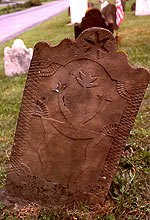Saturday, September 29, 2012
The Harvest Moon - a 4th grade batik
I have done this lesson plan for several years and always get wonderful results. It has become one of my students' favorite projects. I do this in 4th grade once the leaves have started to change their colors.
Here is the lesson plan.
Session 1:
I introduce organic and geometric during the first time we meet. After we discuss the essential question (see lesson plan), we discuss different organic and geometric shapes and forms. We discuss autumn and leaves.
I pass out white drawing paper, pencils, leaves I have collected from my yard, and rolls of masking tape.
I ask the students to drop the roll of masking tape onto their paper. Wherever it lands, they trace it. We discuss that although it is a geometric form, we are going to use it as an organic form – the Harvest Moon.
The students then drop different leaves onto their paper tracing each one. They should have at least three, but may have more. If the leaf falls partially off the paper, then they just trace the part that is on their composition.
Next each student adds the veins on the leaves.
I pass out baskets of crayons for each table to share.
I demonstrate how I want the students to color their leaves.
I ask them to press very hard on the crayon and I also ask them not to color the veins of the leaves. We also color the stems. The students may use any colors but BLACK.
The last thing we do is write our names on the back in crayon and I collect these as they clean up before leaving.
Session 2:
We discuss batiks and pysanky eggs during this session.
I show them two short videos from YouTube (listed on my lesson plan) – one on making batiks and one on making pysanky eggs. We discuss the similarities and differences between the two techniques.
I also show them several examples that we pass around the room. I found out the hard way, it might be a good idea to show the pysanky egg inside a clear plastic container.
Once each student is finished coloring his or her Harvest Moon composition, it is time to turn it into a paper batik.
I demonstrate the steps and write them on my agenda board.
After each student puts on a paint shirt, takes a deskcover and gets his or her project back, check to be sure coloring is complete.
*********************************************************************************
Step 1: Take project to the sink; crumble it up into a ball about the size of a baseball.
Step 2: Wet it under the sink – no longer than 5 seconds.
Step 3: Shake off excess water into sink.
Step 4: Take deskcover and open and spread out project onto it.
Step 5: Get black ink or paint (thinned tempera), a paintbrush and a clean damp sponge.
Step 6: Paint entire surface with black paint – cover completely.
Step 7: Put on plastic throw away gloves (like they use in food service).
Step 8: This is the most important part – take the damp sponge and start lifting the black paint off the project. The sponge may need to be cleaned and rinsed several times.
Step 9: The little cracks we made by crumbling the paper create the effect of a batik.
Step 10: Carry project to drying rack on deskcover. Throw away gloves and clean up desk or table area.
The reason we wrote our names in crayon last time is because the wax in the crayon will resist the black paint as it soaks through the paper to the back.
I usually iron the projects when they are dry.
Last year we drew pictures on a piece of paper, put a piece of wax paper on top of it, and then a piece of muslin on top of that. We could see our designs through the muslin and wax paper. We traced our designs on the muslin with Elmer’s blue gel glue. The next class when the glue was dry, we painted the muslin with acrylic paints. I took the projects and soaked in warm water for about 30 minutes and then scrubbed off the blue gel glue with a hand brush. When these dried, I ironed them. They really looked like a batik.
**********************************************************************************
All examples here were created by 4th grade students.
Subscribe to:
Posts (Atom)










